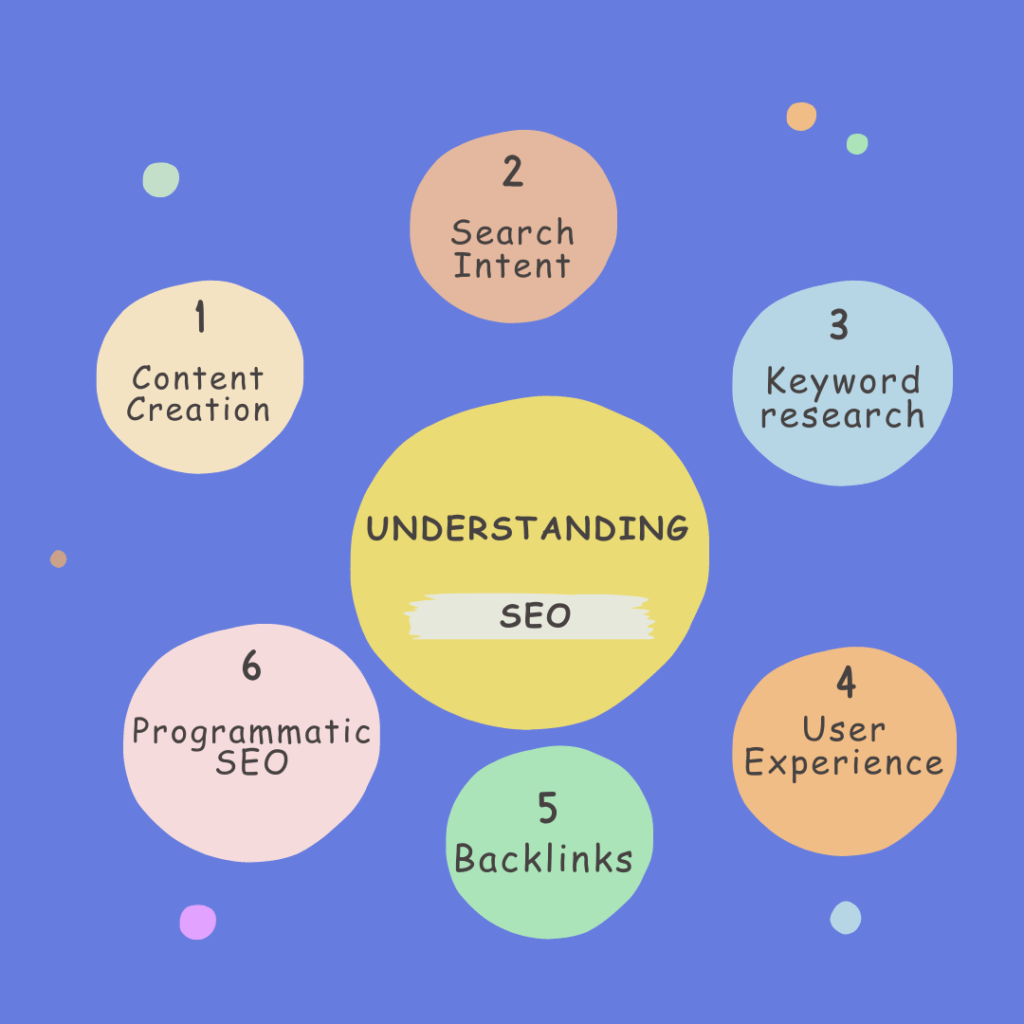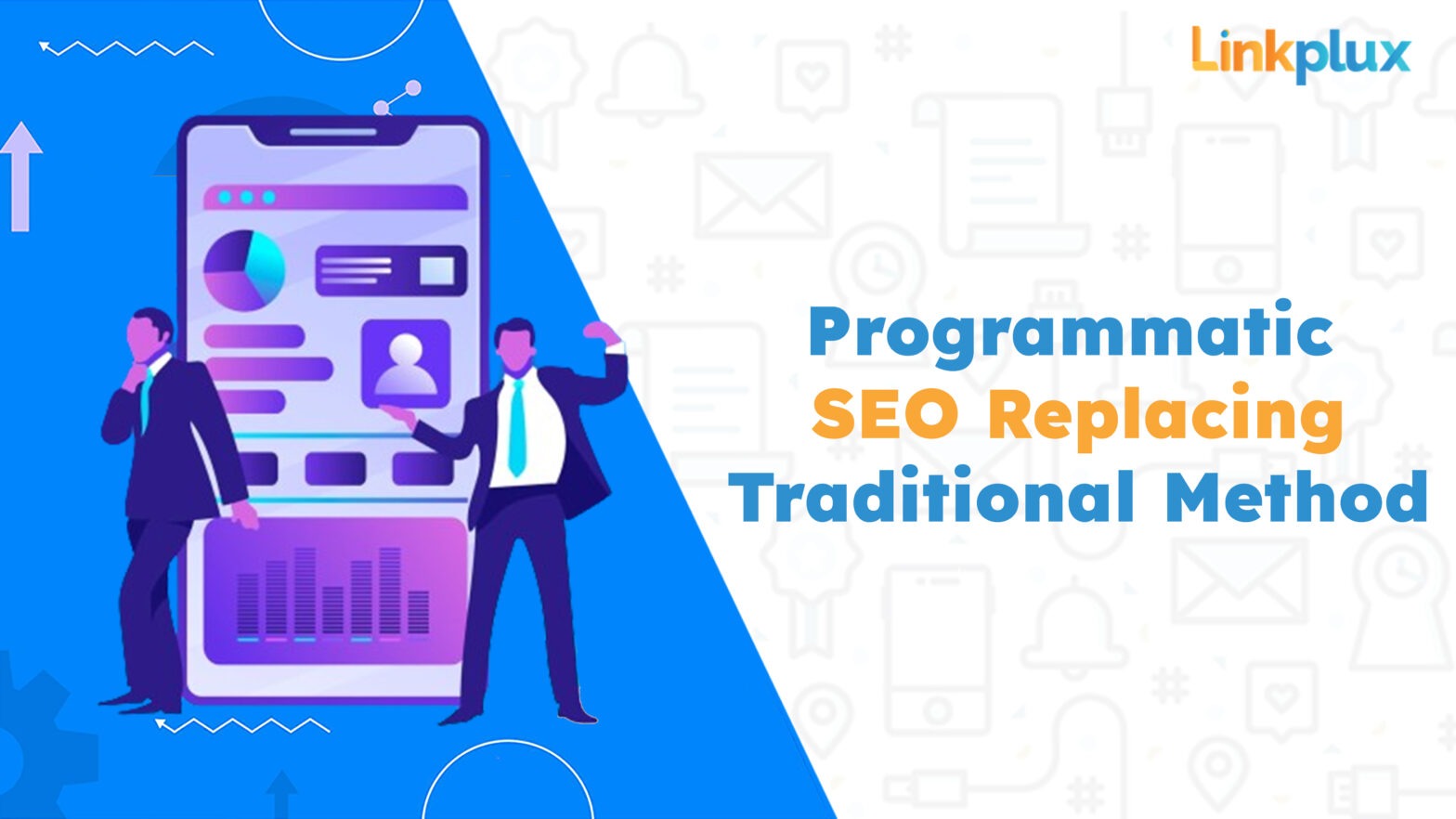Have you ever wondered the difference between programmatic SEO and good ol’ regular SEO? There’s no need to stress; it’s not as complicated as it seems. I’ll be your guide through the maze of digital marketing jargon. Together, we’ll unravel the mystery and shed light on the critical differences between these two approaches. SEO is your website’s language with search engines, while programmatic SEO is a multilingual communicator. Picture traditional SEO as a handwritten letter and programmatic SEO as a swift email; both convey messages differently yet effectively. Simplifying this analogy, let’s delve into the essence of these approaches, easing your online journey. With SEO, your website speaks to search engines, but programmatic SEO speaks many languages, ensuring effective communication. Embracing both methodologies enhances your online presence, bridging the digital divide in the realm of tradition and innovation.

Understanding SEO
Traditional SEO has long been the benchmark for crafting impactful, in-depth landing pages centered around subjects relevant to a company’s target demographic. In essence, traditional SEO is the art of enhancing the quality and quantity of organic web traffic directed to a website or specific web page from search engines.
A standard website SEO process typically follows these steps:
Understanding Programmatic SEO
Think of driving a car: you need more than just having the steering wheel to reach your destination smoothly. Sometimes, steering poorly can lead to veering off course or even accidents. Enter programmatic SEO, like having an advanced navigation system. It automates many traditional SEO tasks, going beyond just keywords and backlinks. This game-changing method has completely changed the way we think about SEO and increased its effectiveness and efficiency in digital marketing.
Programmatic SEO (pSEO) operates similarly to traditional SEO but focuses on scalability. It generates numerous SEO-optimized pages simultaneously, aiming to rank high on Google. Utilizing existing data and preset rules, pSEO creates hundreds to thousands of landing pages to maximize clicks, driving website traffic and revenue. To implement pSEO effectively, a page template, a database with necessary data, and an automation system connecting the database to the template are essential. This bulk page creation strategy expands reach and accessibility, which is crucial for engaging potential customers and boosting online presence.
“Understanding SEO is essential for implementing Programmatic SEO effectively.”
Traditional SEO vs. Programmatic SEO
Choosing Between Traditional SEO vs Programmatic SEO
To unleash the full potential of SEO, expertise in both traditional and programmatic methods is crucial. Understanding their nuances enables strategic utilization. Here are vital tips for leveraging each:
Situational Analysis:
Traditional SEO:
Programmatic SEO:
Considerations for Business Goals: Traditional SEO vs Programmatic SEO
Traditional SEO
We are focused on building brand authority and long-term growth through manual curation and patient strategy implementation.
Programmatic SEO
It is geared towards rapid scaling and data-driven decision-making, providing quick results and insights for goal-oriented businesses. Ultimately, align your SEO strategy with business objectives to achieve optimal results.
Pros of Programmatic SEO
Considerations before Implementation
Case Study
Tripadvisor
To improve its online visibility and expedite content generation, Tripadvisor deployed programmatic SEO. The travel platform effectively created and optimized landing pages for various destinations by utilizing automation techniques, which made it possible for it to reply to a variety of user queries. Tripadvisor’s process automation guarantees a dynamic and responsive approach to real-time changes, essential for a platform that deals with the constantly evolving travel information landscape. The outcomes were better user experience, more exposure in searches, and more traffic to certain destination pages.
Canva
Canva, a graphic design platform, embraced programmatic SEO to scale its operations and cater to a diverse user base. Through automated content creation, Canva efficiently generated personalized landing pages for different design categories, accommodating the unique needs of its users. Programmatic SEO was pivotal in handling the extensive datasets associated with a graphics-focused platform, ensuring users could quickly discover relevant design resources. Implementing programmatic SEO contributed to Canva’s rapid growth by providing quick and efficient solutions for content scaling and user engagement.
Combining the Best of Both Worlds
Comparing traditional SEO and programmatic SEO as interchangeable is fundamentally flawed. Both are integral to success in the digital landscape. While programmatic SEO has garnered renewed interest, it still needs to replace traditional SEO but complements it. The scalability of programmatic SEO and the best practices of conventional SEO are essential components for optimal results. Programmatic SEO can drive significant traffic to your website without requiring extensive human resources. With automation, hiring additional staff or engaging third-party providers is unnecessary. However, if you have queries about programmatic SEO or need assistance with keyword research, feel free to reach out for a consultation.
FAQ’s
How does programmatic SEO improve efficiency compared to traditional methods?
Programmatic SEO automates repetitive tasks such as keyword research, content optimization, and performance tracking, saving time and resources. By analyzing large datasets and patterns, it can identify optimization opportunities faster and adapt to changes in search engine algorithms more efficiently than manual methods.
Does programmatic SEO still require human input and oversight?
While programmatic SEO relies heavily on automation, human input and oversight are still essential. Humans provide strategic direction, interpret data insights, and ensure the quality and relevance of content and optimization efforts. Additionally, human intervention is necessary to address nuanced aspects of SEO that algorithms may overlook.
How does programmatic SEO handle dynamic content and personalized search experiences?
Programmatic SEO excels in handling dynamic content and personalized search experiences by leveraging data analysis and machine learning algorithms. It can tailor content and optimization strategies based on user behavior, preferences, and search intent, providing more relevant and engaging experiences for users.
Can programmatic SEO adapt to changes in search engine algorithms and user behavior?
Yes, programmatic SEO is designed to adapt quickly to changes in search engine algorithms and user behavior. By continuously analyzing data and performance metrics, it can identify trends and patterns, adjust optimization strategies, and capitalize on emerging opportunities to maintain and improve search visibility and user engagement.
Can programmatic SEO improve user experience on a website?
Yes, programmatic SEO contributes to a better user experience by dynamically adjusting content based on user interactions. It can personalize recommendations, layouts, and calls-to-action, leading to improved engagement and satisfaction. This dynamic approach ensures that the website is continuously optimized for the best user experience.

